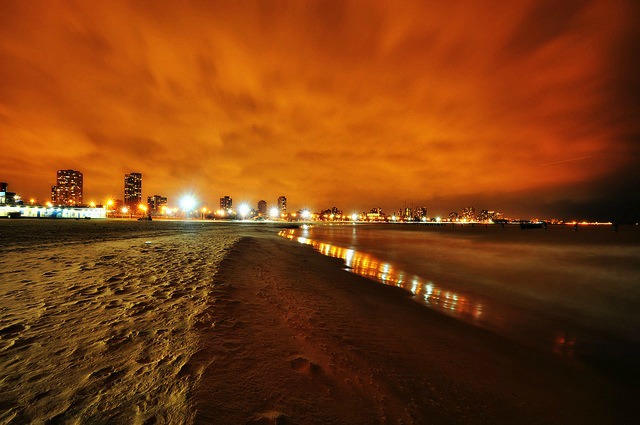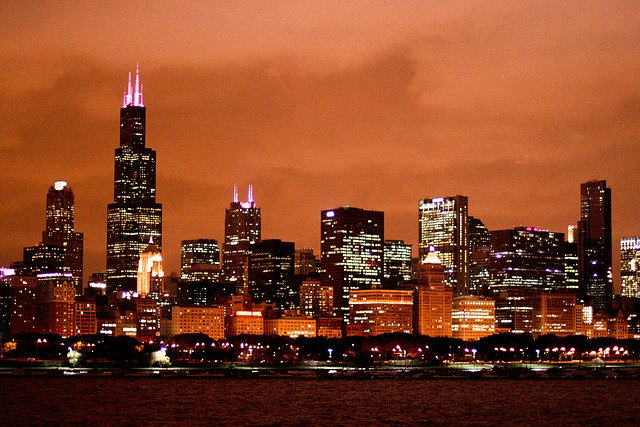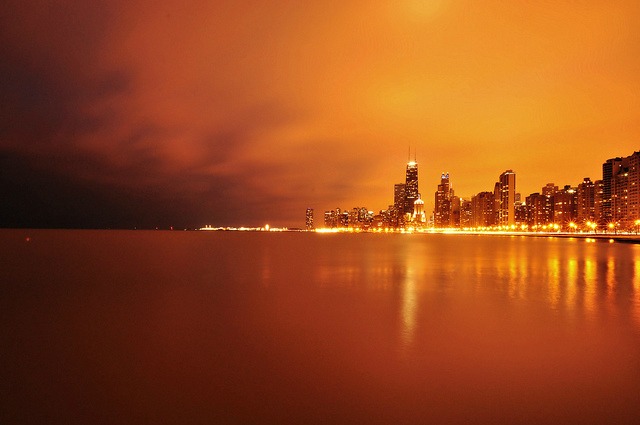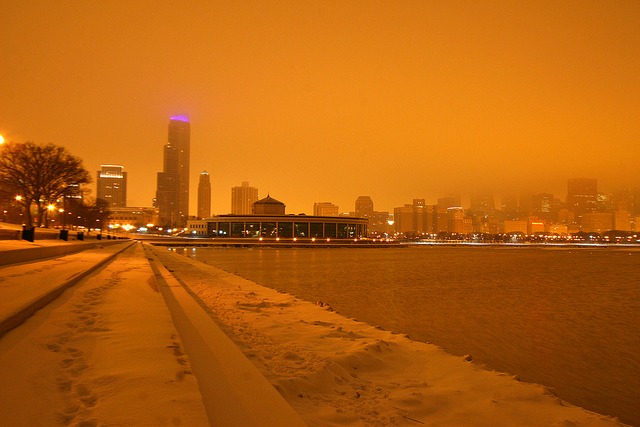Why Is The Sky Red?
By Amy Cavanaugh in News on Sep 8, 2012 6:00PM
If you've gazed up at the night sky over Chicago recently, you've probably noticed that sometimes the sky is a deep, unmistakable red. It's not sunsets—light pollution is changing the way the world's cities look. Not only is light pollution ruining our chances of seeing stars and planets, it's also interfering with our circadian rhythms, which makes us feel like we have jet lag and disrupts natural predator-prey relationships in the animal world.
Discover Magazine reports that a team of scientists led by Christopher Kyba from the Freie Universitaet and the Leibniz Institute of Freshwater Ecology and Inland Fisheries tracked the effects of cloud cover on light pollution and published a report “Red is the New Black,” about the changing color. Discover explains the results:
This useful light doesn’t confine itself to the paths and streets we want to illuminate—much of it gets scattered by and into the atmosphere. This sky glow is a common phenomenon seen over busy urban areas. Some types of light fixtures produce more of a glow than others. Street lamps open on the top, unfocused lights, and upward-facing lights, like those placed under billboards, drastically increase the amount of sky glow. The more light sent upwards, the more light scattered back down by the atmosphere.Kyba’s team sought to measure what effect cloud cover has on sky glow. In places where natural light dominates the night sky, clouds typically make those skies darker, just as they do during daylight hours. But the researchers found that the opposite is true in urban areas: Clouds actually magnify the sky glow effect by reflecting more artificial light back down to Earth. They also discovered that sky glow doesn’t just affect night time brightness—it affects the color of the sky as well.
It’s well known that the daytime sky is blue because the atmosphere scatters shorter blue wavelengths of light more than longer red wavelengths. Similarly, the team found that the shorter wavelengths of artificial light are scattered most easily on clear nights. But with cloud cover, the long-wavelength red light that is usually sent out into space on clear nights is scattered back down to Earth.
The result is that cloudy nights in urban areas have a reddish glow. And the size of the effect is substantial. Taking measurements hours every night for months in Berlin, the team found that the blue portion of sky glow is 7 times more radiant on cloudy nights than on clear night, while the red portion is 18 times brighter. In the visual range, that translates to cloudy nights being thousands of times brighter than they are in natural dark night conditions.
We headed to our Flickr pool to find some examples of the red sky phenomenon over Chicago.





